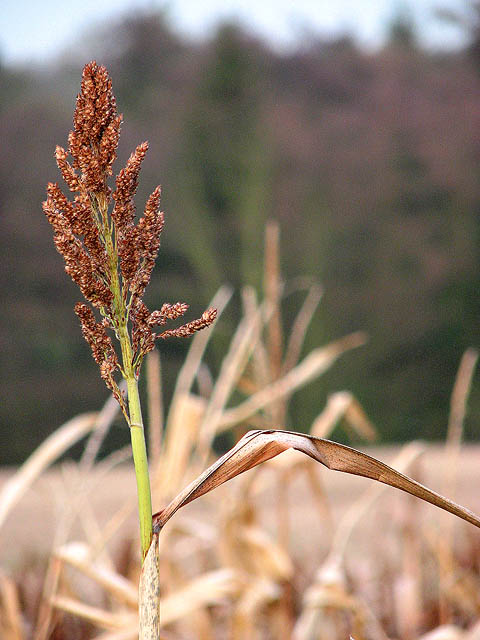Facts for Kids
Sorghum, or broomcorn, is a cool plant in the grass family with about 25 species that grows well in warm, dry places and is used for food, animal feed, and biofuels.
Overview
Uses Of Sorghum
Nutritional Value
Environmental Impact
Cultural Significance
Botanical Characteristics
Cultivation And Harvesting
Pest And Disease Management
Taxonomy And Classification

Inside this Article
United States
Magnesium
Porridge
Erosion
Drought
Popcorn
Disease
Millet
Good
Did you know?
🌾 Sorghum belongs to the grass family, which is also called Poaceae.
🌿 There are about 25 different types of sorghum, which means lots of varieties to discover!
🎈 Some sorghum plants can grow taller than a child, reaching up to 10 feet!
🍲 In Africa, sorghum is a staple food, meaning people eat it almost every day.
🌳 Sorghum's flowers grow in fluffy clusters called panicles that look like a puffy tail!
🐖 Sorghum grains can be used as animal feed for cows, chickens, and pigs.
🥞 People make fun foods like flatbreads and porridge from sorghum grains.
🌈 Sorghum grains come in various colors, including yellow, red, and white.
🚜 Farmers often plant sorghum seeds in the spring when the weather is warm and sunny.
💪 Sorghum is gluten-free and is packed with healthy nutrients like fiber.
Introduction
It's also used for animal feed and to make biofuels. So, whether you're munching on food or seeing it grow in fields, sorghum plays a big part in our lives!
Uses Of Sorghum
♂️ People use it in many ways. First, it's used to make tasty foods such as porridge and pancakes. Some folks even make gluten-free flour from it to bake special treats! 🍪
Additionally, sorghum syrup, which is sweet and sticky, can be drizzled on pancakes or used in recipes. It's also used as animal feed for cows, chickens, and pigs 🐖! Lastly, sorghum sometimes becomes healthy snacks like popcorn. With so many uses, sorghum really helps people enjoy yummy food in many different ways!
Nutritional Value
It's packed with fiber, which keeps our tummies happy! A cup of cooked sorghum has plenty of vitamins and minerals like iron, calcium, and magnesium. 🥛
Sorghum is also gluten-free! This means people with gluten allergies can enjoy it without worry. Eating sorghum can give you energy and help you stay strong and active. It’s a great choice for breakfast, lunch, or dinner. Now that’s a delicious way to be healthy! 🍽
️
Environmental Impact
It grows well in dry areas and helps prevent soil erosion, which is when soil washes
Cultural Significance
Additionally, Native American tribes in the United States have grown sorghum for generations, making various foods from its sweet syrup. Sorghum is also featured in celebrations and rituals because of its importance in agriculture. It’s a plant that brings people together, reminding us of the variety of ways we enjoy food!
Botanical Characteristics
The plant has a tough stem and can resist drought, making it special for farming in dry areas. Sorghum grains are tiny and come in many colors, like yellow, red, and white. 🌈
The big root system helps it drink water from deep underground. This makes sorghum a true survivor in the plant world!
Cultivation And Harvesting
Farmers start by planting seeds in warm soil during springtime when it’s a bit sunny. It’s important to pick a place where the soil has good drainage. Sorghum plants take about 3-5 months to grow tall and strong 🌱. When it's ready to harvest, farmers use big machines called combines to collect the grains. Afterward, they can dry the grains in the sun for storage. In many countries, growing sorghum is eco-friendly because it needs less water compared to other crops. Isn't farming awesome?
Pest And Disease Management
They might also use natural sprays made from plants. To prevent disease, it’s important to rotate crops and keep the fields clean. Healthy plants are less likely to get sick. By taking care of sorghum, farmers can ensure a better harvest each year and keep it healthy and strong!
Taxonomy And Classification
Its varieties do different things: some produce grain for food, while others are used for making sweet syrup. Interestingly, the plant is closely related to sugarcane and millet, which also belong to the grass family. The next time you see a field of grass, remember sorghum is one of its cool relatives!

